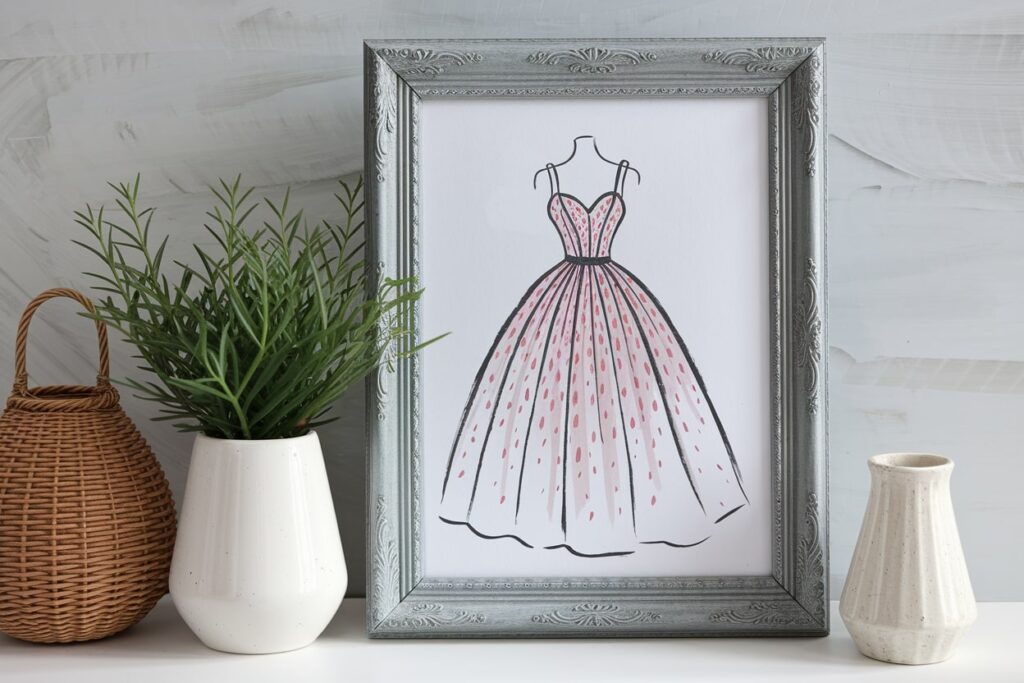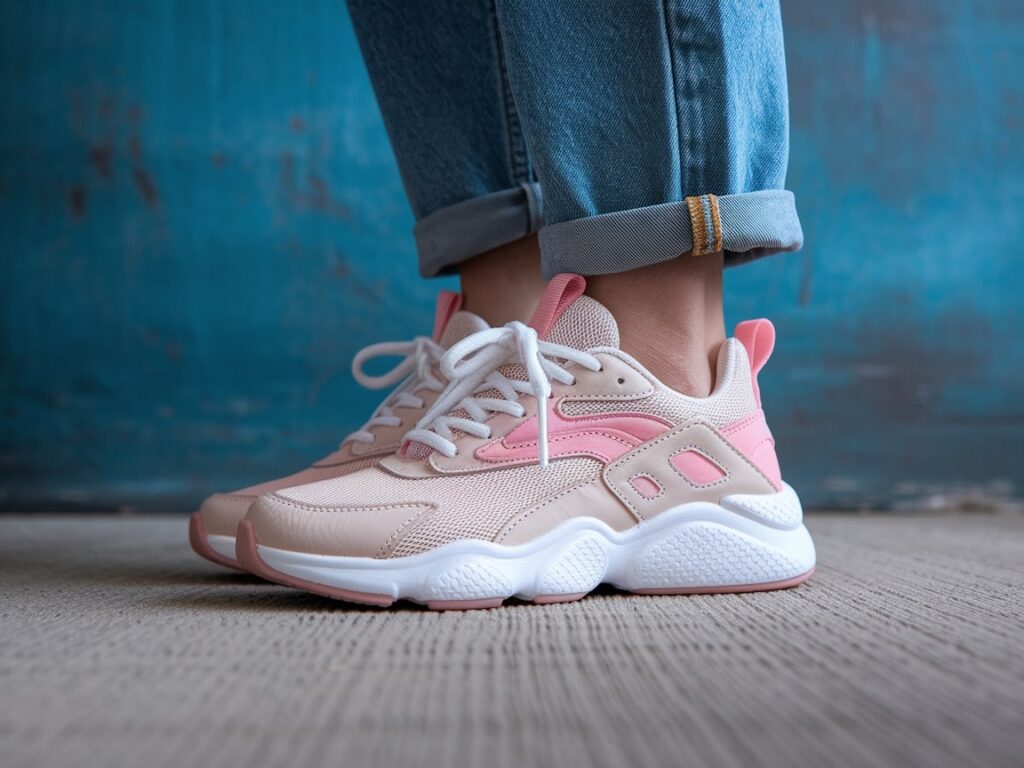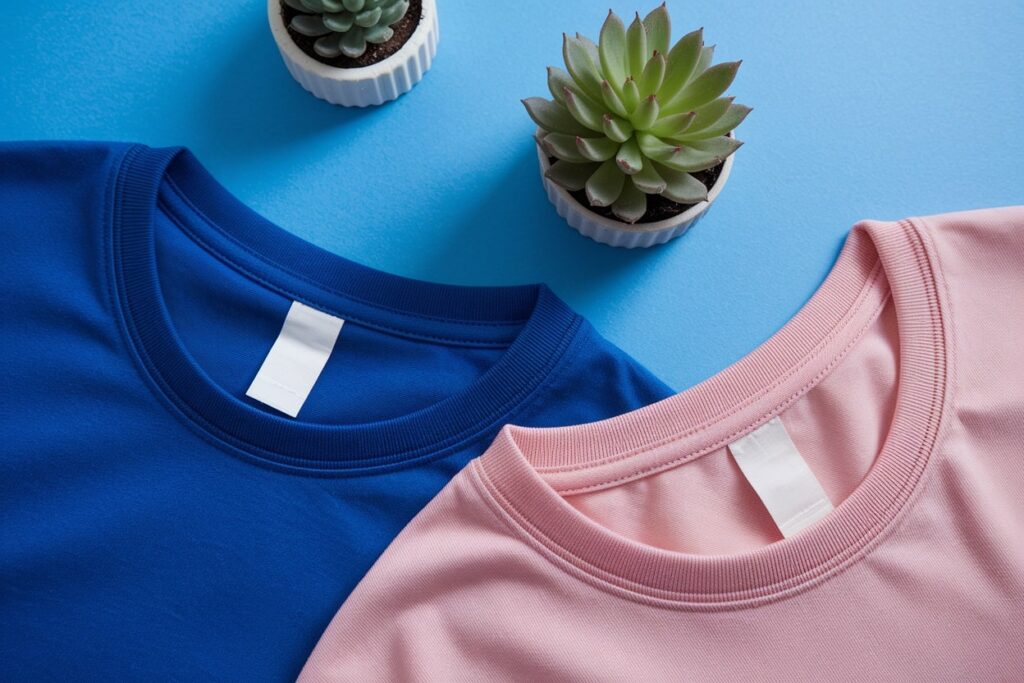The clothing industry continues to evolve rapidly, presenting both challenges and opportunities for new entrepreneurs. Despite market saturation, consumers still seek fresh, innovative designs and shopping experiences that align with their values and lifestyles. The global apparel market reached $1.8 trillion in 2024 and is projected to grow at 4.5% annually through 2028, creating space for newcomers with compelling visions.
Starting a clothing business requires passion, creativity, and business acumen. While building a successful clothing brand involves significant effort, the barriers to entry have never been lower thanks to e-commerce platforms, print-on-demand services, and social media marketing channels. This guide will walk you through every critical aspect of launching your clothing business, from initial concept to sustainable growth.
Step 1: Market Research and Positioning
Identifying Your Target Audience
Before designing your first piece, you need to understand exactly who you’re creating for. Developing detailed customer personas will inform every subsequent business decision. Consider demographics like age, gender, income level, and location, but don’t stop there. Dive deeper into psychographics — the values, lifestyle choices, and aspirations that drive purchasing decisions. Understanding fashion preferences (style sensibilities, price sensitivity, shopping habits) and pain points (what frustrations do they have with existing clothing options) with existing clothing options will help you create products that truly resonate.
Research methods for identifying the target audience might include:
- Social media listening and trend analysis.
- Engaging directly with potential customers through surveys and interviews.
- Analyzing search data and consumer reviews to identify unmet needs.
- Attending industry events and fashion shows to spot emerging trends before they hit the mainstream.
This comprehensive understanding of your audience allows you to create products that solve real problems and fulfill genuine desires rather than adding to market noise.
Analyzing Competitors
Study both direct competitors (similar price point, aesthetic, and target market) and indirect competitors (alternative ways your audience might address their clothing needs). For each competitor, examine their product offerings and price positioning. Notice how they communicate their brand message and develop their visual identity. Evaluate their customer experience, standards, and service approach. Pay attention to the distribution channels they prioritize and the marketing strategies they employ. Customer reviews and sentiment analysis can reveal weaknesses you might address.
This thorough competitive analysis reveals market gaps and opportunities to differentiate your brand: 1) perhaps existing options lack inclusive sizing; 2) maybe there’s a niche for formal wear with performance fabric technology; 3) you might discover that sustainability claims in your segment are mostly superficial, creating an opportunity for genuine commitment to ethical production. Your goal isn’t to copy successful competitors but to learn from their strengths while identifying opportunities they’ve missed.
Finding Your Unique Value Proposition

Your unique value proposition (UVP) articulates why customers should choose your clothing over alternatives. Effective UVPs combine functional benefits (quality, innovation, sustainability), emotional benefits (how wearing your clothes makes customers feel), and social benefits (what wearing your brand communicates to others). A compelling UVP might be “Workwear that transitions seamlessly from office to evening,” “Performance activewear designed specifically for plus-size athletes,” or “Sustainable luxury clothing using reclaimed materials and ethical manufacturing.”
Your UVP should guide all product development, branding, and marketing decisions. It becomes the north star for every business choice, from fabric selection to social media strategy. Resist the temptation to be everything to everyone. The most memorable clothing brands maintain razor-sharp focus on their unique proposition, allowing them to cut through marketplace noise and connect with their ideal customers.
Step 2: Business Planning

Creating a Business Plan
A comprehensive business plan serves as your roadmap and will be essential if seeking external financing. Key components include:
- Begin with an executive summary that provides a concise overview of your business concept.
- Develop a company description that articulates your mission, vision, values, and business structure.
- Your market analysis should explore clothing industry trends, target market characteristics, and competitive landscape in detail.
- The product line section should offer detailed descriptions of your clothing offerings, including technical specifications and pricing strategy.
- Your marketing strategy outlines how you’ll reach and convert customers across various channels.
- The operational plan addresses production methods, fulfillment processes, and day-to-day management considerations.
- Identify key personnel and their qualifications in the management team section.
- Financial projections should include clothing startup costs, revenue forecasts, and break-even analysis with realistic timelines.
This document isn’t meant to be created once and forgotten. Revisit and refine your business plan quarterly as you gather market feedback. It should evolve alongside your business, reflecting new insights and changing market conditions. A living business plan becomes an invaluable decision-making tool rather than a bureaucratic exercise.
Important! When you start a clothing business, be aware that clothing has the highest product return rate. For online sales, it is between 20 and 55% and varies depending on the type of clothing item (sneakers, coat, dress, etc.).
Financial Projections and Funding
Calculate your clothing startup costs accurately. Design tools, software, and sample development expenses can add up quickly. Manufacturing setup often requires minimum order quantities that represent significant investment. Website development, e-commerce platform fees, and initial marketing campaigns require advance budgeting. Don’t forget legal and accounting fees. Perhaps most importantly, ensure sufficient working capital for 6-12 months of operations, as most clothing businesses take time to achieve profitability.
Funding options for clothing startups range from self-funding (bootstrapping) to friends and family investments. Some entrepreneurs secure small business loans or lines of credit, while others launch successful crowdfunding campaigns that double as marketing vehicles. Pre-sales and made-to-order models can reduce initial capital requirements. Angel investors (rare for early-stage) occasionally back fashion ventures with particularly innovative approaches or demonstrated traction.
Whatever funding approach you choose, start conservatively by testing minimal viable products (MVPs) before major production investments. A small collection of exceptionally well-executed pieces will serve you better than an extensive line of mediocre quality. Initial production runs should prioritize gathering customer feedback and validating your concept rather than achieving economies of scale.
Legal Considerations
Protect your business by addressing essential legal requirements early.
- Choose the appropriate business structure — whether LLC, S-Corp, or another entity — based on liability concerns and tax implications.
- Secure necessary business licenses and permits at local, state, and federal levels.
- Register trademarks for your brand name and logo to prevent potential disputes as you gain visibility.
- Copyright protection for original designs provides another layer of legal security, though fashion-specific intellectual property protections vary by jurisdiction.
- Develop comprehensive terms of service and privacy policies for your website that comply with relevant regulations like GDPR or CCPA.
- Manufacturing and supplier contracts should clearly outline quality standards, delivery timelines, and dispute resolution procedures.
- If hiring staff, ensure compliance with employment laws regarding classification, compensation, and workplace safety.
The fashion industry faces specific regulatory requirements regarding labeling, materials safety, and international trade. Consult with an attorney familiar with apparel regulations to ensure compliance from the outset. This investment in proper legal foundations prevents costly complications that could derail your business as it gains momentum.
Step 3: Product Development

Design Process
Whether you’re designing everything yourself or working with a design team, establish a structured process that balances creativity with commercial viability. Begin with concept development through mood boards, inspiration gathering, and theme exploration. This creative foundation then translates into sketches and digital designs representing potential products. Material selection follows, choosing fabrics and trims that align with both aesthetic vision and brand values.
Pattern making transforms designs into technical specifications for manufacturing. This precise, mathematical process determines how two-dimensional fabric becomes three-dimensional garments. Sample development brings your designs to life as prototypes. These samples undergo fit testing across your size range, ensuring proper proportions and comfort. The refinement stage incorporates feedback, addressing any issues with fit, construction, or aesthetic appeal. Only then should you develop final production specifications with detailed documentation for manufacturers.
Throughout this process, maintain a cohesive aesthetic while ensuring each piece serves a purpose in your collection. Resist the temptation to create designs that merely replicate existing market offerings. Your design process should reflect your brand’s unique perspective while addressing specific needs within your target market.
Sourcing Materials

Your material choices profoundly impact quality, price point, and brand values.
- Consider fabric types and weights appropriate for your designs, balancing aesthetic appeal with functional requirements like durability, drape, and care needs.
- Evaluate sustainable versus conventional options against your brand positioning and target price points.
- Some materials require significant minimum order quantities, creating inventory management challenges for startups.
- Supplier reliability and communication capabilities influence your production timeline and quality consistency.
- For brands with sustainability claims, certification requirements (organic, fair-trade, etc.) provide necessary verification.
- Color consistency and quality control processes vary significantly between suppliers, affecting your final product presentation.
Build relationships with multiple suppliers to mitigate supply chain risks. A manufacturing disruption at a single source can halt your entire production process. Visit material suppliers when possible, examining samples in person rather than relying solely on digital representations or small swatches. The tactile quality of your fabrics creates an immediate impression of your brand’s value proposition.
Manufacturing Options
Choose a production approach based on your volume, quality requirements, and budget constraints:
- Domestic manufacturing typically involves higher costs but offers closer oversight and faster turnaround times. This proximity enables more frequent factory visits and simplified communication regarding production adjustments.
- Overseas manufacturing generally provides lower costs but extends lead times and introduces potential communication challenges across time zones and language barriers.
- Cut-and-sew contractors work well for small to medium production runs, offering flexibility as your demand fluctuates.
- Full-package production provides comprehensive service, including pattern-making and materials sourcing, simplifying your operations but potentially increasing costs.
- Print-on-demand services eliminate inventory requirements but limit customization options and typically increase per-unit costs.
- Made-to-order approaches reduce waste and inventory costs but extend delivery timeframes, requiring customer education about production processes.
Visit manufacturing facilities whenever possible before committing to production partnerships. Request samples of previous work and speak with other brands using their services. Establish clear quality control standards and communication protocols before beginning production. Remember that your manufacturing partners significantly impact your brand reputation through their craftsmanship and reliability.
Step 4: Branding and Marketing

Creating a Strong Brand Identity
Your brand identity encompasses far more than visual elements. It represents the emotional connection and associations consumers form with your clothing line. Visual components include your logo, color palette, typography, and photography style — all of which should communicate your brand personality at a glance. Voice and messaging guidelines establish your communication style, whether authoritative, playful, minimalist, or passionate.
Your brand story provides the narrative context for your company and designs. This might include your founder’s journey, the problem your clothing solves, or the traditions and craftsmanship you honor. Articulate your values clearly — what your company stands for and against. Today’s consumers increasingly base purchasing decisions on alignment with personal values regarding sustainability, inclusivity, transparency, and social responsibility.
Develop comprehensive brand guidelines to maintain consistency across all touchpoints, from product tags to social media content. This consistency builds recognition and trust over time. Your brand identity should feel authentic rather than manufactured. It must resonate with your team members first if it’s to connect genuinely with consumers.
Digital Marketing Strategies
Effective clothing marketing typically combines multiple approaches tailored to your specific audience:
- Content marketing through style guides, lookbooks, and behind-the-scenes content establishes your expertise and brand personality.
- Social media strategies should prioritize visual platforms like Instagram and TikTok for fashion brands, with each platform requiring distinct content formats and engagement approaches.
- Email marketing nurtures relationships with subscribers through exclusive content and offers, driving repeat purchases and loyalty.
- Strategic influencer partnerships with personalities aligned with your brand values extend your reach to relevant audiences.
- Paid advertising on social platforms and Google can accelerate growth once you’ve identified high-converting customer segments and messaging.
- SEO ensures your site appears for relevant search terms, capturing potential customers actively seeking your product category.
Allocate marketing resources based on where your target audience spends their time and how they prefer to discover new brands. Track performance metrics diligently, adjusting strategies as you gather data about customer acquisition costs and lifetime value across different channels. The most effective marketing feels like a natural extension of your brand experience rather than an interruption or sales pitch.
Building an Online Presence
Your digital storefronts require careful development to convert browsers into buyers. Your e-commerce website must be user-friendly and mobile-responsive, featuring high-quality product photography that accurately represents colors, textures, and fit. Social media profiles should maintain consistent branding while encouraging regular engagement through varied content formats. Consider complementary third-party marketplace listings on Amazon, Etsy, or fashion-specific platforms to expand your reach.
Content hubs like blogs, YouTube channels, or podcasts create deeper connections with your audience through educational or inspirational content. These platforms allow you to tell your brand story, showcase styling possibilities, discuss industry trends, or highlight your sustainability practices in greater depth than product listings allow.
Invest in professional photography that conveys both functional benefits and emotional appeal. Product descriptions should address practical considerations like fit, material, and care instructions while evoking the lifestyle and feelings associated with wearing your designs. Remember that every digital touchpoint shapes customer perception of your brand’s quality and attention to detail.
Step 5: Sales Channels
E-commerce Options
Consider various platform options for selling clothing online, each with different advantages:
- A dedicated e-commerce website using Shopify, WooCommerce, or BigCommerce provides maximum control over customer experience and branding.
- Social commerce through Instagram Shopping, Facebook Marketplace, or TikTok Shop offers seamless purchasing within platforms where customers already spend time.
- Online marketplaces like Etsy, Amazon, or fashion-specific platforms provide built-in traffic but limit brand differentiation. Many businesses sell directly from their online stores and add buttons to their product pages that lead to marketplaces. These buttons are often affiliate links (for example, the Amazon Associates Program), which allows them to cover part of the commission costs for placement on the marketplaces.
- Wholesale platforms connecting to boutique retailers can facilitate B2B relationships without traditional trade show expenses.
Each platform maintains different fee structures, audience reach, and customization options. Many successful clothing brands utilize multiple e-commerce channels simultaneously, tracking performance to optimize channel allocation as they grow.
Your e-commerce approach should prioritize frictionless purchasing experiences. Minimize steps between product discovery and checkout completion. Provide detailed sizing information to reduce returns. Offer payment options matching your target demographic’s preferences. These seemingly small details significantly impact conversion rates and customer satisfaction.
Retail Partnerships
For physical distribution, explore various retail relationship models:
- Pop-up shops and markets provide direct customer interaction and immediate feedback while requiring minimal long-term commitment.
- Consignment arrangements with boutiques allow placement in curated retail environments without upfront wholesale purchases. The store takes a percentage when items sell, reducing your initial risk.
- Wholesale relationships with retailers involve upfront purchase of your inventory, improving cash flow but requiring established production capabilities.
- Department store concessions or shop-in-shops create branded environments within larger retail contexts.
- Trunk shows and fashion events generate excitement and urgency around limited-time availability.
Start locally with retailers that align with your brand positioning before pursuing larger accounts. Build genuine relationships with store owners and buyers who appreciate your vision. Understand their customer base and sales cycles before pitching your line. Provide marketing support and quick inventory restocking to become a valued vendor partner rather than just another line on their shelves.
Direct-to-Consumer Approaches
The direct-to-consumer model offers several advantages for emerging clothing brands:
- Higher profit margins without retailer markup improve financial sustainability during growth phases.
- Direct relationships with customers provide invaluable feedback for product development and marketing refinement.
- Maintaining control over brand presentation and customer experience ensures consistent messaging at every touchpoint.
- Perhaps most importantly, direct sales generate valuable first-party data for marketing optimization and product development. Understanding which styles, colors, and sizes sell best — and to whom — enables increasingly targeted offerings. This data-driven approach reduces inventory risk and marketing waste as your brand evolves.
Build community around your brand through events, exclusive content, and personalized communication. This community-centered approach transforms customers into advocates who share their enthusiasm organically. Consider membership models, early access programs, or behind-the-scenes content for your most engaged followers. These relationship-building efforts extend customer lifetime value far beyond single transactions.
Step 6: Operations and Logistics

Inventory Management
Effective inventory management prevents cash flow problems that sink otherwise promising clothing brands.
- Implement inventory tracking software appropriate for your business scale, ensuring real-time visibility across sales channels.
- Calculate optimal reorder points and safety stock levels based on sales velocity and production lead times.
- Monitor sell-through rates by product, identifying best sellers and underperforming styles quickly.
- Consider just-in-time or made-to-order models for specialty items with unpredictable demand patterns.
- Develop strategies for handling deadstock and seasonal transitions to minimize wasted inventory.
- Plan strategic discounting to maintain healthy inventory turnover without training customers to wait for sales.
The delicate balance involves having sufficient stock to meet demand without excessive capital tied up in inventory. This requires continuous refinement based on sales data and market trends. Implement forecasting models that consider seasonality, marketing calendar events, and historical performance to anticipate inventory needs accurately.
Shipping and Fulfillment
Your fulfillment strategy significantly affects customer satisfaction and operational profitability.
- Evaluate self-fulfillment versus third-party logistics providers based on your volume, complexity, and control requirements.
- Design packaging that reinforces your brand experience while minimizing shipping costs and environmental impact.
- Select shipping carriers strategically, negotiating rates as your volume increases.
- International shipping introduces complexities regarding customs documentation, duties, taxes, and delivery timeframes. Develop clear policies and procedures before expanding globally.
- Establish streamlined return processes that balance customer convenience with fraud prevention.
- Provide order tracking and delivery notifications that set appropriate expectations and reduce customer service inquiries.
Test your entire fulfillment process before launch by placing test orders through various scenarios. Experience your packaging, shipping notifications, and delivery timeline from the customer’s perspective. This end-to-end testing reveals potential issues before they impact real customer experiences and reviews.
Customer Service
Superior customer service can differentiate your brand in a crowded market.
- Provide clear sizing information with detailed measurements and fit guidance to reduce return rates.
- Maintain responsive communication across multiple channels — email, social media, chat, and phone — with consistent voice and problem-resolution approaches.
- Develop thoughtful policies for returns, exchanges, and damaged items that protect your business while demonstrating care for customers.
- Implement post-purchase follow-up and care instructions that extend garment lifespan and customer satisfaction.
- Consider loyalty programs that recognize and reward repeat customers with exclusive benefits beyond discounts.
- Continuously collect feedback for improvement through post-purchase surveys, social listening, and direct outreach.
Document standard operating procedures for customer interactions to ensure consistency as your team grows. Remember that exceptional service experiences generate powerful word-of-mouth marketing that no advertising budget can replicate.
Step 7: Growth Strategies

Scaling Production
As demand increases, prepare to scale production while maintaining quality standards.
- Identify manufacturing partners with the capacity for larger runs before you need them.
- Establish relationships early and grow together when possible.
- Negotiate volume-based pricing tiers that improve margins as you scale, but never sacrifice quality for cost reduction.
- Streamline product development processes through improved documentation, communication protocols, and sample approval workflows.
- Invest in technology to enhance efficiency across your operation, from design software to inventory management systems.
- Develop relationships with additional suppliers to prevent bottlenecks during growth phases.
- Create demand forecasting models that incorporate seasonality, marketing initiatives, and historical performance data. These models guide production planning and cash flow management during expansion.
Throughout scaling efforts, maintain rigorous quality control to protect your brand reputation. Growth means nothing if it compromises the product quality and attention to detail that built your initial success.
Expanding Product Lines

Thoughtful expansion opportunities include:
- Complementary categories (like accessories or footwear) that leverage your existing aesthetic and customer base.
- Extended sizing ranges demonstrate inclusivity while opening additional market segments.
- Seasonal variations of successful styles reduce development costs while offering novelty to returning customers.
- Limited edition collaborations with artists, influencers, or complementary brands create excitement and urgency.
- Custom or personalized offerings command premium pricing while deepening customer connection.
- Licensing opportunities may emerge as your brand gains recognition, extending your design sensibility to new product categories through partnership agreements.
Let customer data and feedback guide expansion decisions rather than personal preference or industry trends alone. Expand methodically, maintaining focus on your core competencies and brand promises. Successful growth often comes from doing more of what already works rather than constant reinvention.
International Opportunities
When considering global markets, research country-specific sizing standards, style preferences, and regulatory requirements. Cultural nuances significantly impact marketing effectiveness across borders. Adapt your approach accordingly, potentially working with local marketing partners who understand regional sensibilities.
Explore international e-commerce platforms that already serve your target markets with established payment processing and shipping solutions. Consider distribution partnerships with local expertise in regions where direct operations would prove challenging. Develop market-specific pricing strategies that reflect purchasing power and competitive positioning in each region.
Plan for currency fluctuations and international banking complexities that accompany global expansion. Test new markets with minimal inventory before full commitment, using pop-up events or limited releases to gauge response. International growth requires patience and cultural sensitivity alongside operational adaptations. The most successful global brands maintain their core identity while demonstrating respect for local preferences and traditions.
Conclusion
Building a successful clothing business requires patience, adaptability, and unwavering commitment to your vision. The most resilient brands combine creative excellence with sound business fundamentals, neither sacrificing artistic integrity for commercial success nor ignoring market realities in pursuit of creative expression. This delicate balance emerges through experience and continuous refinement.
Before starting a clothing business, do thorough research that reveals genuine market opportunities aligned with your strengths and passions. Develop distinctive products that solve problems or fulfill desires better than existing options. Create meaningful connections with your audience through authentic storytelling and consistent experiences. Remain flexible as you grow, adapting to changing market conditions without abandoning your core values and unique perspective.
Remember that fashion is ultimately about addressing human needs — for self-expression, comfort, belonging, and functionality. By keeping your customer at the center of every decision, you’ll build not just a clothing line but a brand that resonates and endures through changing trends and market conditions. The path may not be linear, but with persistence and strategic thinking, your clothing business can find its place in this dynamic industry.






